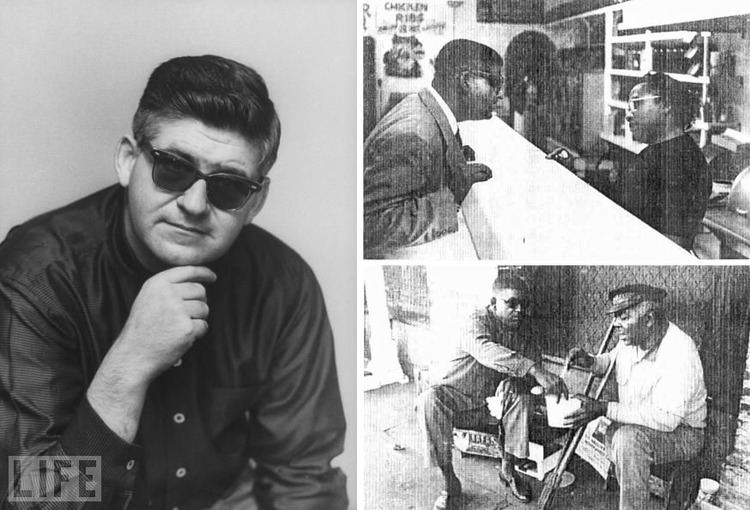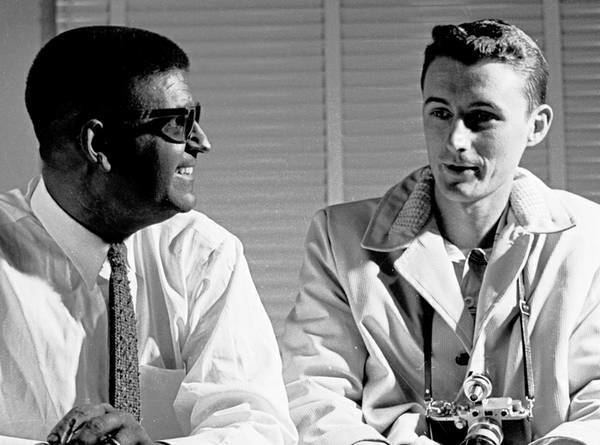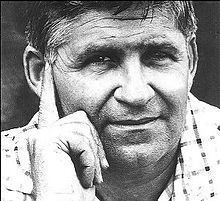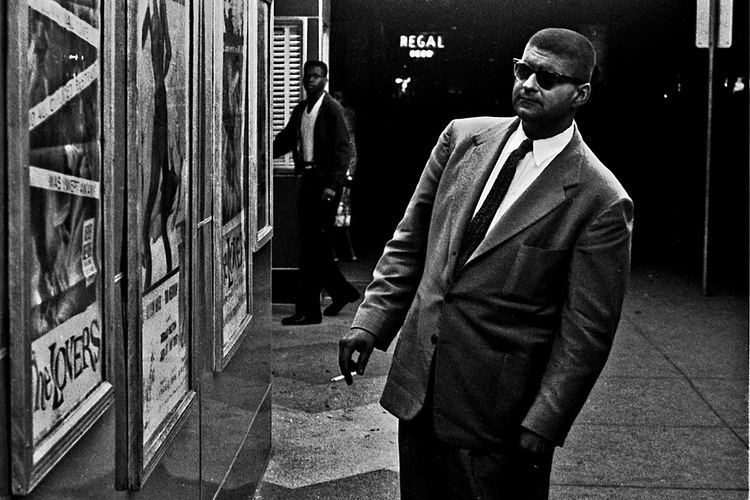Name John Griffin Occupation Writer Role Journalist | Nationality American Religion Roman Catholic | |
 | ||
Spouse Elizabeth Holland (m. 1953–1980) Movies Black Like Me, Uncommon Vision: The Life and Times of John Howard Griffin Books Black Like Me, Scattered Shadows, The devil rides outside, Follow the ecstasy, Prison of Culture: Beyond B Similar People Thomas Merton, Gerda Lerner, Paul Green | ||
Uncommonvision the life and times of john howard griffin
John Howard Griffin (June 16, 1920 – September 9, 1980) was an American journalist and author from Texas, who wrote about racial equality. He is best known for his project to temporarily pass as a black man and journey through the Deep South of 1959 to see life and segregation from the other side of the color line. He first published a series of articles on his experience in Sepia Magazine, which had underwritten the project. He published a fuller account in a book Black Like Me (1961). This was later adapted as a 1964 film of the same name. A 50th anniversary edition of the book, with versions for devices, was published in 2011 by Wings Press.
Contents
- Uncommonvision the life and times of john howard griffin
- Early life
- Black Like Me and later
- Posthumous works
- Death
- Related works
- Works
- References

Early life

Griffin was born in 1920 in Dallas, Texas to John Walter Griffin and Lena May Young. His mother was a classical pianist, and Griffin acquired his love of music from her. Awarded a musical scholarship, he went to France to study French language and literature at the University of Poitiers and medicine at the École de Médecine. At 19, he joined the French Resistance as a medic, working at the Atlantic seaport of Saint-Nazaire, where he helped smuggle Austrian Jews to safety and freedom in England.

Griffin returned to the United States and enlisted, serving 39 months in the United States Army Air Corps stationed in the South Pacific, during which he was decorated for bravery. He spent 1943–44 as the only European-American on Nuni, one of the Solomon Islands, where he was assigned to study the local culture. He suffered a bout with spinal malaria that left him temporarily paraplegic. During this year, Griffin married an island woman.

Developing blindness after a 1946 accident in the United States Army Air Corps, Griffin began to write essays about his experience, and other works. He returned home to Texas without his wife and converted to Roman Catholicism in 1952, becoming a lay Carmelite. He taught piano. He gained dispensation from the Vatican for a second marriage. He married one of his students, Elizabeth Ann Holland. They had four children together.
In 1954, he published his first novel, The Devil Rides Outside, a mystery set in a monastery in postwar France, where a young American composer goes to study Gregorian chant.
During the 1940s and '50s, Griffin wrote a number of essays about his loss of sight and his life, followed by his spontaneous return of sight in 1957. At that point he began to develop as a photographer.
He published a novel Nuni (1956), a semi-autobiographical work drawing from his year "marooned" in the Solomon Islands. It shows his developing interest in ethnography. He conducted a kind of social study in his 1959 project, resulting in his book Black Like Me (1961).
Black Like Me and later
In the fall of 1959, Griffin decided to investigate firsthand the plight of African Americans in the South, where racial segregation was legal, blacks had been disenfranchised since the turn of the century and closed out of the political system, and whites were struggling to maintain dominance against an increasing civil rights movement.
Griffin consulted a New Orleans dermatologist for aid in darkening his skin, being treated with a course of drugs, sunlamp treatments, and skin creams. Griffin shaved his head in order to hide his straight hair. He spent weeks travelling as a black man in New Orleans and parts of Mississippi (with side trips to South Carolina and Georgia), getting around mainly by bus and by hitchhiking. He was later accompanied by a photographer who documented the trip, and the project was underwritten by Sepia magazine, in exchange for first publication rights for the articles he planned to write. These were published under the title, Journey into Shame.
Griffin published an expanded version of his project as Black Like Me (1961), which became a best seller in 1961. He described in detail the problems an African American encountered in the segregated Deep South meeting the needs for food, shelter, and toilet and other sanitary facilities. Griffin also described the hatred he often felt from white Southerners he encountered in his daily life — shop clerks, ticket sellers, bus drivers, and others. He was particularly shocked by the curiosity white men displayed about his sexual life. He also included anecdotes about white Southerners who were friendly and helpful.
The wide publicity about the book made Griffin a national celebrity for a time. The book had several editions. In a 1975 essay included in later editions of the book, Griffin recalled encountering hostility and threats to him and his family in his hometown of Mansfield, Texas. Someone hanged his figure in effigy. He eventually moved his family to Mexico for about nine months before they returned to Fort Worth.
The book was adapted as a 1964 film of the same name, starring James Whitmore as Griffin, and featuring Roscoe Lee Browne, Clifton James and Will Geer. A 50th anniversary edition of the book was published in 2011 by Wings Press.
The author continued to lecture and write on race relations and social justice during the early years of the Civil Rights movement. In 1964, Griffin received the Pacem in Terris Award from the Davenport (Iowa) Catholic Interracial Council for his contributions to racial understanding. In 1975, Griffin was severely beaten by the Ku Klux Klan, but survived.
In his later years, Griffin focused on researching his friend Thomas Merton, an American Trappist monk and spiritual writer whom he first met in 1962. Griffin was chosen by Merton's estate to write the authorized biography of Merton, but his health (he had been diagnosed with type 2 diabetes) prevented him from completing this project. He concentrated on Merton's later years.
Posthumous works
Griffin's nearly finished portion of the biography, which covered Merton's later years, was posthumously published in paperback by Latitude Press in 1983 as Follow the Ecstasy: Thomas Merton, the Hermitage Years, 1965–1968.
Griffin's essays about his blindness and recovery were collected and published posthumously as Scattered Shadows: A Memoir of Blindness and Vision (2004).
In recognition of the 50th anniversary of the publication of Black Like Me, Wings Press published a new edition. It also published updated editions of Griffin's other works, including his first novel, Devil Outside the Walls.
Death
Griffin died in Fort Worth, Texas, on September 9, 1980, at the age of 60, from complications of diabetes. He was survived by his wife Elizabeth Ann Griffin and children. He was buried in the cemetery in his birthplace of Mansfield, Texas. After her death, Elizabeth was also buried there, although she had remarried.
There have been persistent rumors that Griffin died of skin cancer, which purportedly developed from his use of large doses of methoxsalen (Oxsoralen) in 1959 to darken his skin for his race project. Griffin did not have skin cancer. He incurred only temporary and minor symptoms from taking the drug, especially fatigue and nausea.
